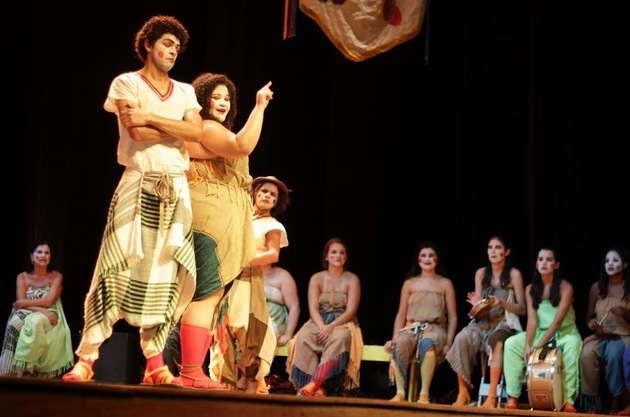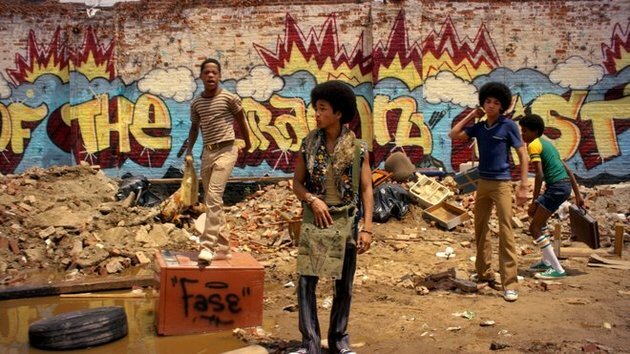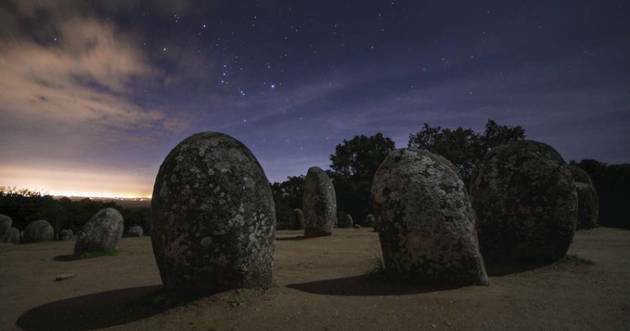The Renaissance work entitled Adam's Creation was made around 1511 by the famous Italian artist Michelangelo.
This is a work carried out using the fresco technique and is part of the set of paintings made on the Sistine Chapel Ceiling, produced between 1508 and 1512 at the commission of Pope Julius II.
Adam's Creation it is the representation of the biblical passage in which the creator of the world, God, gives rise to humanity, symbolized in the figure of the first man, Adam.

This was the first work in which an artist was able to express all the mystery, spontaneity and, at the same time, divine force in the act of creation.
Detailed analysis of the work
The composition conveys harmony by creating two planes that the spectator visually traverses from the ground up.
Adam, according to the biblical book, was created in the likeness of God. In painting, we can see such parity and symmetry.
The bodies of both are shown lying face down, with the mortal in the terrestrial environment, initially alone; the divine being is wrapped in a mantle and surrounded by angels.
We selected some areas of this great work for a more detailed analysis. Look:
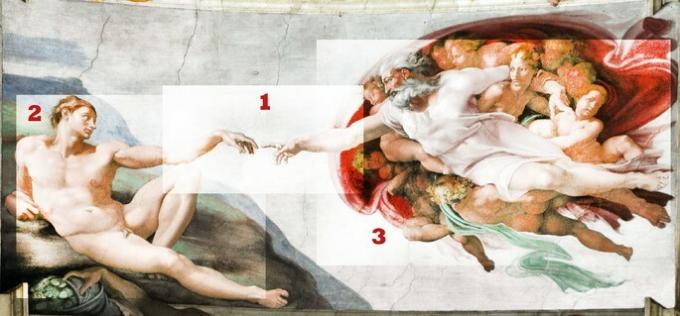
1. God's gesture

The characters' fingers, almost touching, are the highlight of the composition.
Adam's hand still denotes lack of vitality, which will be bestowed on him through the touch of God. The creator displays his index finger outstretched, in a simple and direct gesture, gracing the man with life.
According to historian Ernst Gombrich, this is considered one of the greatest works of art ever produced. In his words:
Michelangelo managed to make the touch of the divine hand the center and culmination of the painting, and made us see the idea of omnipotence through the power of his creative gesture.
2. Adam awakening
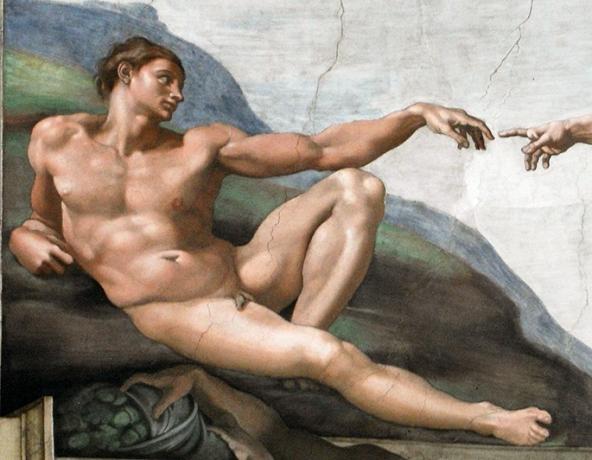
Adam is presented as a man who lazily wakes up. He lifts his torso towards God and rests his elbow on his knee in order to get closer to the divine gesture.
It is as if he has just woken up from a deep sleep, as we can see his body relaxed and his features accommodated.
By the way, the human figure is very well represented anatomically in Adam, who is completely naked and has muscles showing.
3. the magnitude of the creator

The figure of God is powerfully manifested. The long gray hair and voluminous beard convey the idea of wisdom.
His clothing is represented in a fluid way, which allows the observation of a young and muscular body, like Adam's. This way of representing the human being, valuing corporeality, is characteristic of Renaissance art.
Here, the creator has the body wrapped in a red cloak, which is inflated by the wind. Many angelic figures accompany him, and it can be said that the woman beside him turns out to be Eve, Adam's companion, who still waits in heaven for the moment to descend to Earth.
Human brain in God's mantle

In the 1990s, the American researcher Frank Lynn Meshberger found in Adam's Creation huge similarity between the drawing of the brain anatomy and the figure of God with angels wrapped in the red cloak.
The images are actually very similar and, according to studies, Michelangelo even represented some internal parts of the organ, such as the frontal lobe, optic nerve, pituitary gland and cerebellum.
This theory makes sense, given that Michelangelo was an expert in anatomy.
The thinking that prevailed at the time, based on humanist and anthropocentric ideology, also contributed to making this hypothesis true. During this period, man came to be seen as the center of the universe.
Michelangelo seems to have paid a kind of "homage" to human rationality, represented by the brain organ.
Michelangelo and its historical context

Michelangelo di Lodovico Buonarroti Simoni, or just Michelangelo, was born on March 6, 1475, in Caprese, Italy.
He was an exceptional artist, contributing greatly to the history of Western civilization at a time when enormous cultural and social transformations were taking place.
We lived in the Renaissance period and Italy was considered the center of artistic effervescence, which emerged based on the classical culture of ancient Greece and Rome.
In this scenario, Michelangelo stood out due to his genius, putting his art as an object of enchantment and also of confrontation.
The artist made his life a devotion to art, working until the last days. He died on February 18, 1564, in Rome.
To get to know other Renaissance artists as well, check out:
- Rafael Sanzio
- Leonardo da Vinci
- Renaissance Artists
Bibliographic references
Folha Collection - Great Masters of Painting

